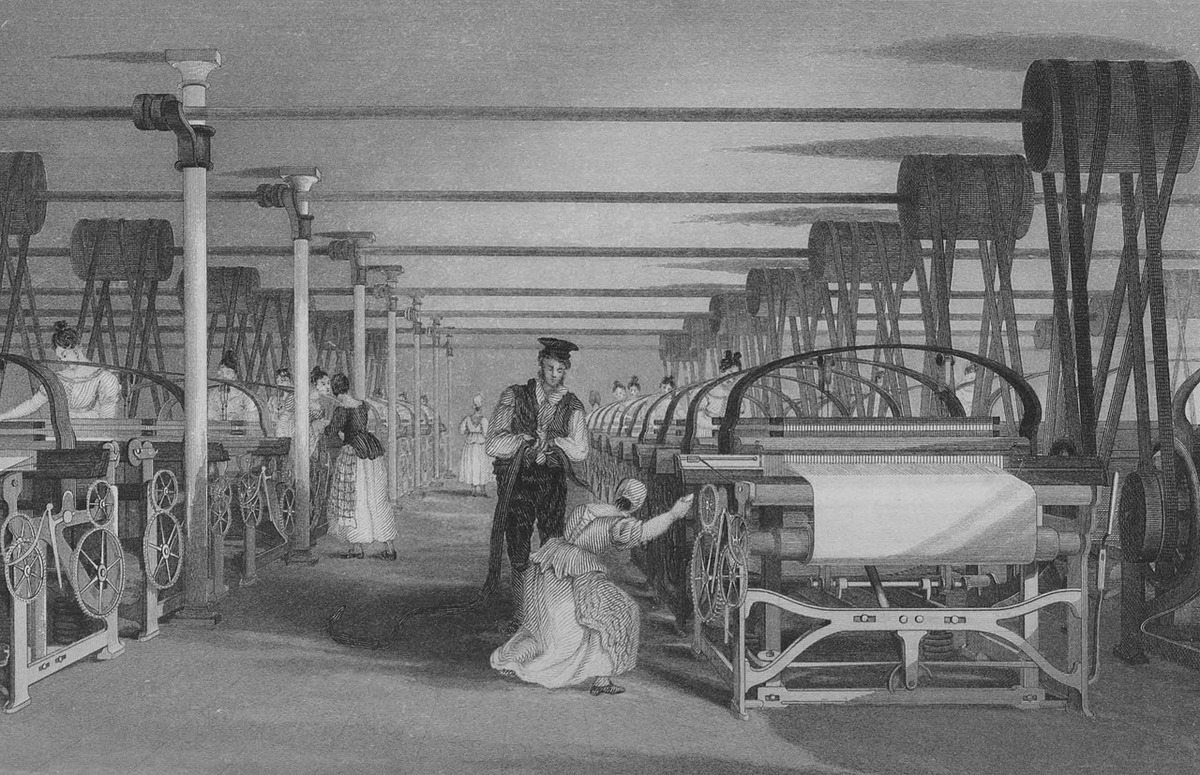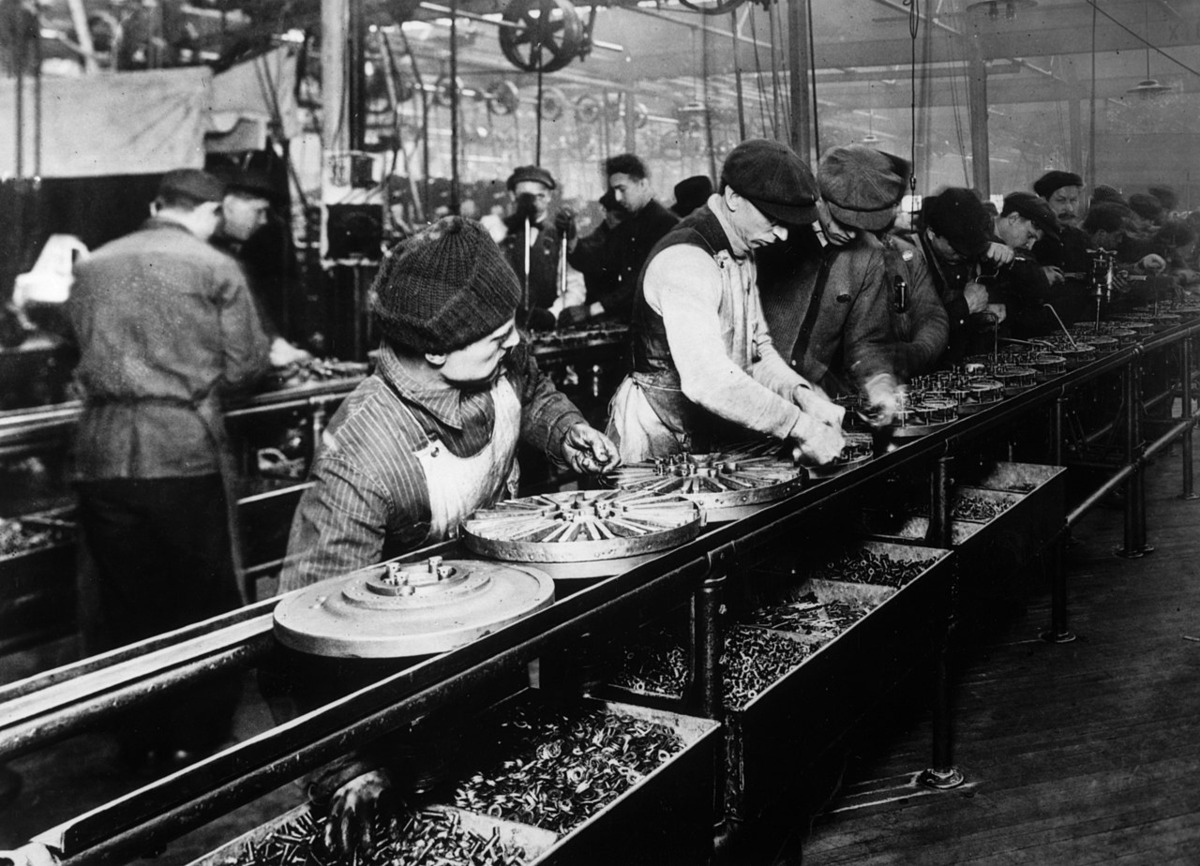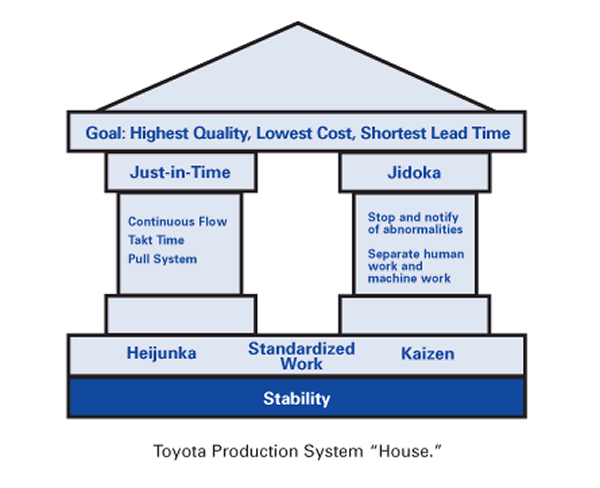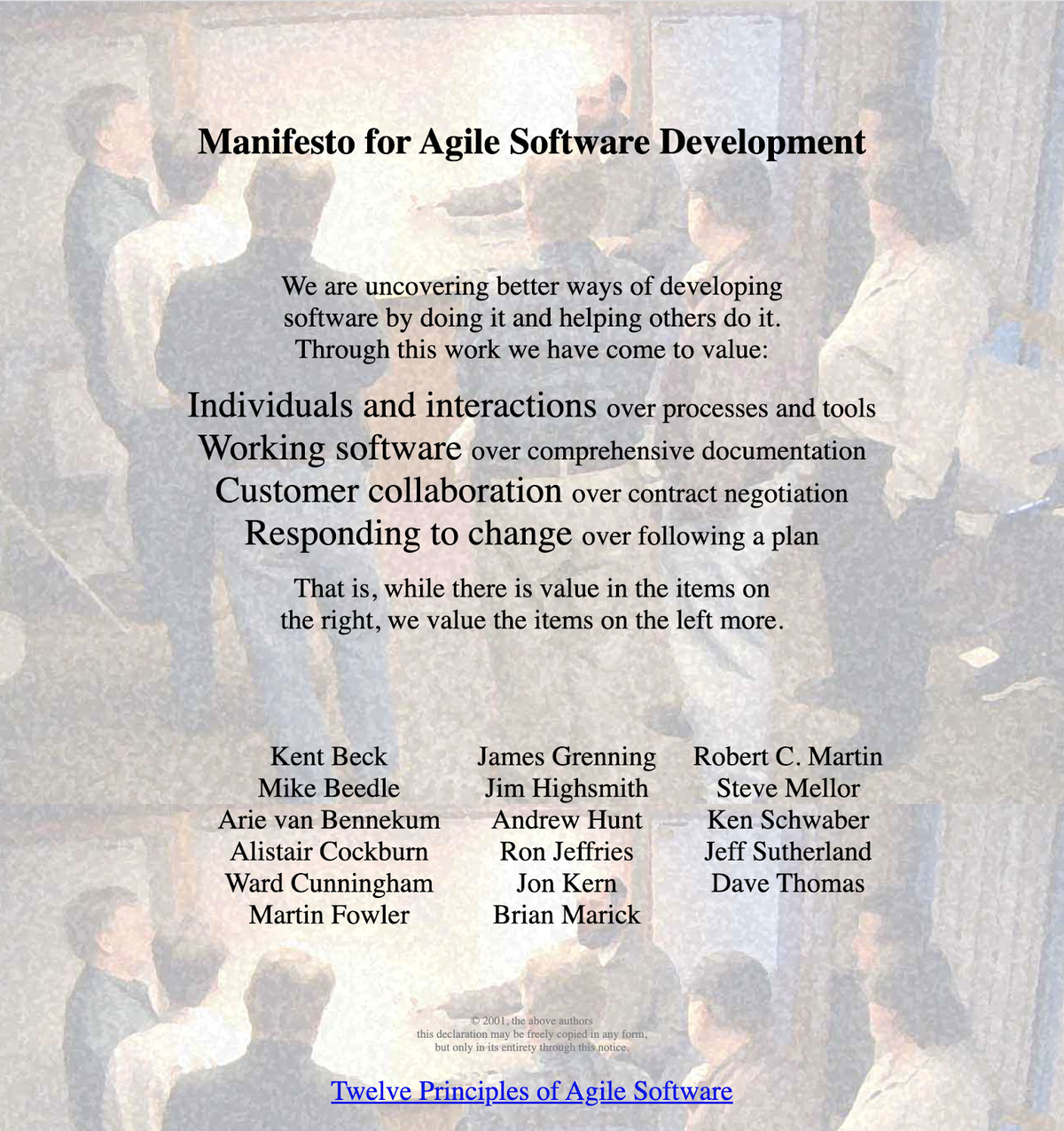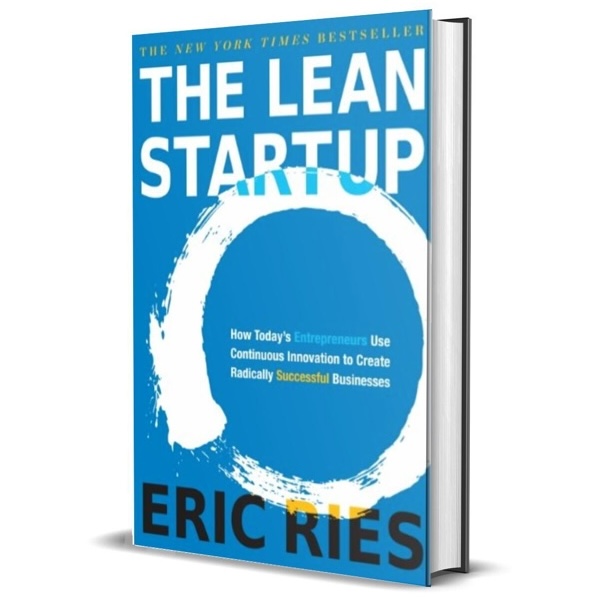Common ways startups fail to make what people want (and what to do instead)
Every successful tech company like Amazon, Stripe, and Y Combinator has “put your users first” as a core principle. But despite sounding obvious and easy, many startups still fail to deliver something their users actually want.
Why does this happen?
To understand why it’s so hard to make something people want, we need to start with the history of how “users first” came to be an important business principle. “Users first” began, believe it or not, 2.5 million years ago.
Back then we had to make everything ourselves: food, clothes, tools, shelter.
Everything you could possibly need was either made by you or by someone you closely knew, perhaps a family or community member. This is how the majority of things were made for millions of years.

Then we time warp to the 19th century where something changed: we started making things using automatic looms, printing presses, and steam engines to harness the power of fossil fuels.
We usually think of the industrial revolution as a technological revolution, but perhaps even more importantly, the industrial revolution was a management revolution.
The management revolution
Taylorism (1880s–1950s) and Fordism1 (1890s–1910s) birthed the assembly line and the supply chain:
 A simple supply chain that turns raw materials into finished products delivered into the hands of customers in a streamlined, predictable manner
A simple supply chain that turns raw materials into finished products delivered into the hands of customers in a streamlined, predictable manner
We had specialized labour before, but something was different this time.
People started to see the business itself as a product to be improved.

We developed the field of scientific management, where essentially consultants would stand around in a factory with their stopwatches and time how long it takes for people to screw a bolt into a car or assemble a hamburger in a fast food restaurant.
Based on this data, they would then rearrange the workers’ workplace to make those movements as efficient as possible, minimizing wasted time and space.
As we moved from heavy steam engines to electric motors, we redesigned factory floors so each worker had their own power tools, rather than relying on a centralized steam engine.
We still do this today, Amazon warehouses use advanced robotics and machine learning to achieve ever greater optimizations of time and space.

Assembly lines were so good at making things that we made too many things! Now an entirely new industry came into existence: marketing, to tell you why you needed to buy something despite already having it.
But there’s a problem with this diagram. Can you see what the problem is?

The consumer is not involved in this process at all!
Our assembly line is really good at taking an existing product and scaling it, replicating it millions of times.2
But if your product flops, you don’t find out until you’ve already produced millions of it, leaving mountains of unsold cars rusting away in a warehouse.
In the 1980s, a challenger arose that threatened to unseat Ford as the top automaker: Toyota. It made quality, reliable cars so efficiently and cheaply that U.S. auto executives freaked out because they couldn’t understand how Toyota was doing it. What was Toyota doing differently?
The distribution revolution
Toyota coined terms that we are familiar with today, like Kanban and Agile, distilled into the popular book “The Lean Startup” in 2011.
The Toyota Production System’s insight was to ask, “Why don’t we flip our assembly line around and make the consumer the start of the chain that kicks everything off?”
Instead of products being pushed by the business, they are pulled by the consumer.
You no longer build a product first and then tell everyone about it afterwards. Instead, you wait for your customer to make a purchase, and then you start making what they asked.
Lean does not mean being cheap—it’s not about making the product more cheaply and then telling everyone about it—that’s still the old way.
What it really means is treating your business as a science experiment—conducting trials with real customers to collect feedback and test your hypotheses, instead of assuming you know the answer.
The insight is that your business doesn’t make products for a market—it’s the market that pulls the product out of your business.3
Marketing also works differently. Under the Lean model, marketing’s job is not to advertise and tell you what to buy. It’s to understand and anticipate needs. Not to sell what you’ve already made, but to discover what people don’t have that you could potentially make.
The software revolution
Back in the day, you had to buy software from retail stores in physical form like CDs or floppy disks, so it made sense to “manufacture” your software in the same manner as a car.4
Software development followed a “waterfall” model. Like an assembly line, product managers set the requirements, designers design it, developers develop it, and then you test and (physically) ship it.

This was efficient when you had physical limitations of doing batched production runs of burning CDs, and loading them on pallets into a truck to be stocked on shelves.
But using the Internet, we don’t need to use the “factory” model anymore. You can deploy your software continuously, not in fixed, one-time updates. There are no CDs in stores anymore; people don’t walk into the drugstore to go buy a copy of your software.
With Agile, deploying is just one part of your cycle, not the end of your cycle.
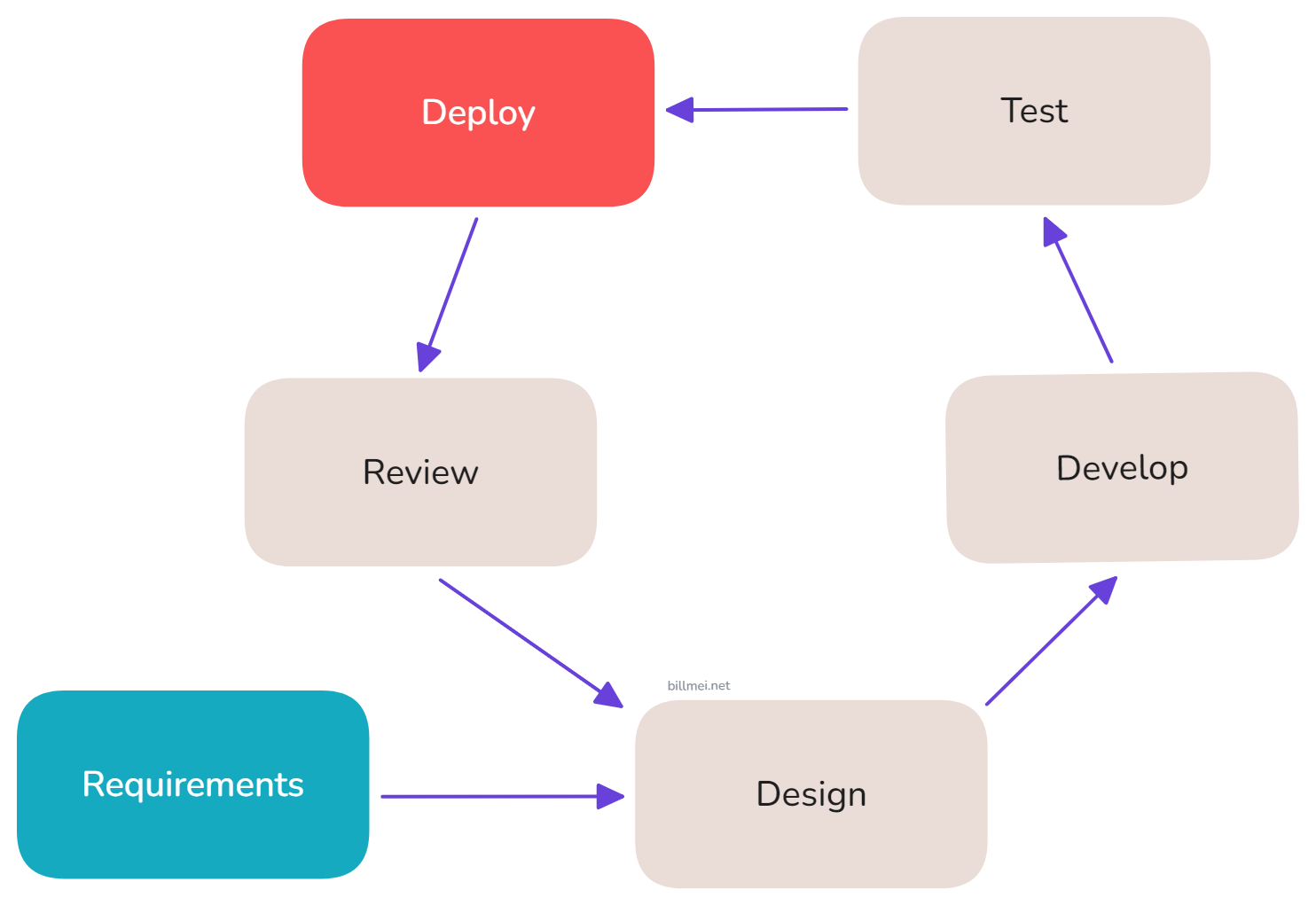
This is a total perspective change from how we did things previously. It’s no longer about optimizing production batches to best fit CDs into a truck, but about how to adapt to customer feedback the fastest.
Yet most businesses you interact with day-to-day don’t seem like they’re very interested in hearing your opinion. That likely includes your business! Where did it all go wrong?
Why you don’t naturally put your users first (and what to do instead)
Putting users first requires a mindset shift: your users are not passive consumers, but your business partners.
Normally, when you meet a potential customer you’re excited to sell them on your amazing product! But your users are not at the end of an assembly line waiting to be sold to, they should be part of your entire product development process. Every customer interaction—even those as mundane as a shipping confirmation—is an opportunity for feedback.
Your users will often tell you what they want—if you listen. You likely already have a list of highly requested features lying around somewhere in your customer service inbox—have you looked at it recently?
It’s hard to get real feedback
It’s human nature to be positive and want to support entrepreneurs (I think this is really sweet 🥰) so your customers will lie to you and tell you what they think you want to hear, which misleads you into thinking you’ve listened to your users when you actually haven’t.5
But actions don’t lie—that’s why sitting down with your users and looking over their shoulder while they attempt to accomplish a task using your product is so informative.
If you don’t want to leave your house you can also pretend to be a user by “dogfooding”6 and trying to actually solve a problem using your own product, completing a “friction log” where you record every point of friction or confusion you encounter along the way.
Make people decide on either “yes” or “no” instead of “later”
“I’ll do it later” is just a polite way to avoid rejecting you—but if the answer is “no” you want to find out as quickly as possible. Paul Graham wrote about the “Collison installation” which I’ll quote:
“More diffident founders ask “Will you try our beta?” and if the answer is yes, they say “Great, we’ll send you a link.” But the Collison brothers weren’t going to wait. When anyone agreed to try Stripe they’d say “Right then, give me your laptop” and set them up on the spot.”
Will data change your mind?
Lean interprets my business as a hypothesis, so I’ll ask “What evidence would I need to see to convince myself that this hypothesis is true or false?”
If I run an A/B test and see that sign-ups increased, then I could conclude “the new design improved sign-ups, so we should ship it”.
But if sign-ups decreased, then I could also conclude “the new design helped weed out unqualified customers, so we should ship it.”
Since I didn’t change what I was planning to do anyway based on whether a number goes up or down, then I’m just wasting my time running an experiment.
Experiments are useful for one-time actions when the desired outcomes are clear, but they can’t tell you what users actually think. Longer session times could indicate engagement, or it could indicate a confusing interface that users struggle to navigate.
Write from the user’s perspective
A practical trick I use every day is to reframe how I write tasks to focus on the user’s perspective.
Instead of “Implement [feature]”, I’ll phrase it from the user’s point of view:
“As a [specific user], I want to do [action], so I can achieve [benefit].”
Instead of “Make a search feature for this blog”, I’ll write “As a new subscriber to Bill’s Essays, I want to search the archive for specific topics so I can skip articles I’m not interested in and find the most relevant ones I want to read.”
Phrasing it this way uncovers a deeper need: the user isn’t interested in a search feature; they are overwhelmed by the large number of essays in the archive and what they actually want as a new reader is just to “sample” some articles to see if my writing is interesting.
This opens up some alternative solutions; instead of a search box, I could solve this using a recommendation engine, a curated set of popular articles, or a floating animated platypus offering helpful suggestions.
I like this wording shift because it keeps the focus on the user’s needs, emphasizing that the task is done only when the user benefit is achieved—not just when the engineering implementation is done.
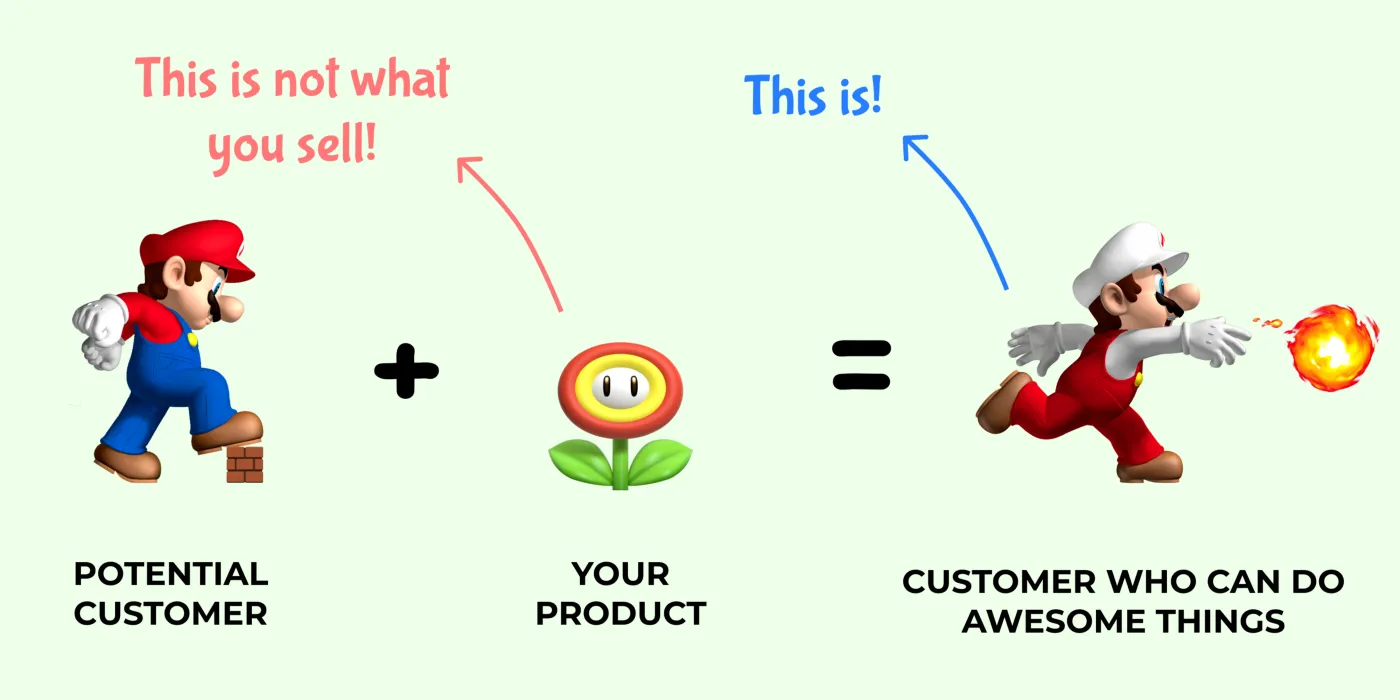 It’s unknown where this meme originated, but this specific graphic is from this article
It’s unknown where this meme originated, but this specific graphic is from this article
Get to know your users in real life
Did you know you can actually talk to people? In real life?! This doesn’t require any special techniques, just some gumption!
You don’t have to book a customer interview or a formal UXR (User Experience Research) study—anyone you meet could be a customer! Sometimes the best insights come from casual conversations you strike up with a stranger sitting next to you at the café.
When I first got into tech, I had no clue what tech companies actually did. So, I started attending tech conferences, not just to network, but to learn and understand the industry. This was immensely valuable for understanding how entrepreneurs think and helped me learn about the common challenges that every business needs solving.
You can run a business without talking to real people and using only your financial reports, just like you can fly a plane staring only at your dashboard and without looking out the window, but where’s the fun in that?!
Get creative. Users want to talk to you too! When’s the last time you called a customer service hotline and the answer was “I’m the CEO, I’m here to help”?
Empathy is hard
Empathy is hard—you have to constantly do the uncomfortable work of getting into peoples’ heads, trying to see the world from their eyes, crawling under their skin, putting on their clothes, and walking a mile in their shoes.
Another reason it is hard is because of the curse of knowledge—the more you know about your product, the harder it is to empathize with users who are unfamiliar.
A classic demonstration is the tapper and the listener. You get two people and say to the first person, “Think of a song and then just tap out the rhythm of the song.”
The first person is the “tapper” and the other person is the “listener”.
Then you ask, “Do you know what song is being tapped?”
The tapper will be very confident that they’ve tapped the right song, but the listener will have no idea what song it is because they don’t hear what the tapper is hearing in their head.
Web developers typically write code on desktops with huge monitors, so they’ll often put features in hidden menus that appear on hover, thinking that it’s an intuitive UI.
However, users viewing the website on their phones will entirely miss these features because phones can’t hover.
If you mostly interact with your site on your laptop, you’ll forget what it’s like to experience your product the same way that your users do.
When not to put users first
Users “first” doesn’t mean “at the expense of everything else.” While understanding users requires empathy, empathy doesn’t mean sacrificing your personal time or your team’s effectiveness.
Burning yourself out won’t help anyone in the long run. You are your teammate’s internal user! If you sacrifice your own effectiveness, from your teammate’s perspective you’re not helping them put their user (you) first.
The faster horses problem
“Users first” doesn’t mean “the customer is always right”. Users are at the beginning of the supply chain, but they are not the entire supply chain.
Your users may be the experts on their problem, but you are still the expert on the solution.
This is the “faster horses problem”, which comes from an apocryphal quote misattributed to Henry Ford: “If I asked what my customers wanted, they would’ve said faster horses.”
Users may ask for a specific solution, but your job is to dig deeper into the underlying problem, which may reveal alternative solutions.
The bridge to nowhere problem
Imagine there’s a city divided by a river. There’s a large population living on one side of the river, but only a small community living on the other side of the river.
Now, should we build a bridge across the river?
You can argue, “The fact that almost no one lives on the other side of the river is evidence that no one wants to go there. We shouldn’t build a bridge to nowhere.”
But that’s not true, because if the bridge existed, then more people would want to move to the other side as the bridge makes it more convenient to get there.
You need to anticipate future demand, not just react to present needs.
This is most relevant if you’re building infrastructure—tools that open up new opportunities even if the immediate demand isn’t obvious.
“Users First” is a profound statement
We live in an exciting time, because we’re now moving away from a world where Lean is the default supply chain…

…back to the supply chain from 2.5 million years ago where you make your own tools.

I’m not just talking about the creator economy, but with the advanced robotics, 3D printing, and AI that we have access to, it’s never been easier to make exactly what you want for yourself.
FarmBot is an automatic robotic farm that gives you fresh veggies in your backyard with just a garden hose and an Internet connection.
ChatGPT turns every user into a power user.
We’re slowly bringing the user closer and closer to ourselves!
Still, I think you need a state of deep humility to say “I don’t know what people want”.
The default position is to think you know what people want because it’s all we’ve known for the last 2.5 million years. Everything that we’ve developed and made was just for ourselves or the people around us. We’ve intimately understood our own wants.
It wasn’t until we had complex global supply chains that we started making products for millions of people that we would never meet. This distance is how we forget what people want. It’s really scary—it’s unnatural, like losing trust in what you see with your own eyes.
But ultimately, losing trust in your senses is how science as a whole has progressed.
We learned that the world is counterintuitive, and we didn’t grow and develop scientific thinking until we learned to distrust our own perspectives and to think about things in a different way.
From the first person perspective, the sun revolves around the earth, but later we learned that the earth actually orbits around the sun.
We learned that lightning is not from angry deities but instead caused by these invisible forms of energy that you can’t see or touch.
It’s just ridiculous to think that there’s these little animals crawling around everywhere so small you can’t even see them, but they cause all the diseases.
Being open to the idea that you could be wrong, and that the intuitive explanation is not the right one is how we rose out of the Stone Age, and it’s what propels us towards the stars.
I only share half of my writing publicly—this article was originally sent to my private email list two years ago, and is now available because people keep asking me for it 😊
If you’d like to get articles like this months before they become available publicly, you can subscribe below:
Subscribing is free, no spam ever, and you can safely unsubscribe anytime
Lastly, in the spirit of “users first”, please give me feedback on this blog post! Comment on this post on Substack with your positive and/or negative observations.
Footnotes
-
Yes, named after the car company. ↩
-
“You can have a Ford Model-T in any color as long as it’s black.” ↩
-
The only thing that matters for a new startup:
In a great market—a market with lots of real potential customers—the market pulls product out of the startup.
-
Going back even further, software is just a special case of recorded media that followed the same distribution model: vinyl records and cassettes at music stores, or printed books at bookstores. ↩
-
Rob Fitzpatrick talks about this in The Mom Test; the key is to come up with a way of figuring out what customers want that is so unbiased that even your mom can’t lie to you. ↩






